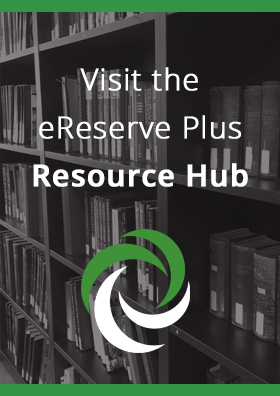When working in an academic environment, considerations of intellectual property and copyright management are familiar terms for many. However, despite a constant presence, it’s a good idea to review and refresh the memory on what exactly copyright means, covers and excludes – after all, knowledge is power.
Let’s consider some basics around copyright and how this might affect educators’ choice of reading material.
What does copyright protect?
Work needs to be an original, intellectual expression to be legally protected.
While specific copyright laws vary from one country to another, some major concepts apply in almost every situation. As such, for work to be legally protected, it needs to be an original expression of intellect, which is documented on a medium. That is to say that books, sculptures, music, photographs, choreography and, essentially, most other materials that make reproduction possible in some way are copyrightable.
The length of a work’s copyright may vary, yet as a rule of thumb, something created today is protected for the artist’s entire life plus 70 years. There is, however, a lot of complexity around this as different guidelines apply to older pieces of work.
How does it protect?
Generally speaking, works are automatically copyright protected once they are created. Because of this, one can be the owner of a piece of work even without registering the work itself.
As owner, one has control over the following:
- The distribution and reproduction of the work.
- The display and performance of the creation in a public space.
- The creation of a similar or obviously derivative piece.
Additionally, there might be some moral rights in regards to the use or destruction of the original’s name.
 It is possible to transfer copyright.
It is possible to transfer copyright.Are copyrights transferrable?
The short answer to this is yes. An owner of copyright material can choose to give, sell or transfer their rights to others on a permanent as well as temporary basis.
In some cases, copyright owners can allow the public access or open source, something that can help circumnavigate limits and conditions within the law. Within the academic setting, however, copyright of books and articles is a little bit more complex.
For example, for the right to publish a piece of work, a publisher requires a publishing licence or must be given non-exclusive access. These licences or agreements need not be permanent, but enable academics to maintain an intellectual legacy while providing their work to a wider audience.
What is exempt from protection?
Systems, procedures and processes aren’t protected under copyright law.
Despite the fact that original work is inherently copyrightable in most cases, there are exceptions.
In the U.S., for example, systems, procedures, operational methods and processes aren’t protected under copyright law. Instead, they may fall under patent law. This means that there is not only a lack of copyright protection, but material is freely available. Similarly, principles, concepts, ideas, short phrases, discoveries, designs and symbols or names are often not applicable to intellectual property law in Australia.
Even with protection though, once the copyright expires, it becomes available in the public domain.
How does eReserve fit in?
When choosing a reading list for the academic year ahead, it’s important to differentiate between what is and isn’t available due to copyright laws. At eReserve, we provide you with the tools to do just that, and take control of your reading lists while managing any digital copyright considerations that may arise.
This means that all faculty, librarian and management staff have the ability to eliminate the risks of compliance issues when compiling materials lists. Library system integration with eReserve Plus therefore provides an easy-to-use, fast and reliable method for more streamlined workflows.
For more information on eReserve Plus and how you can benefit from its applications, reach out to us via phone, fax or email today.


